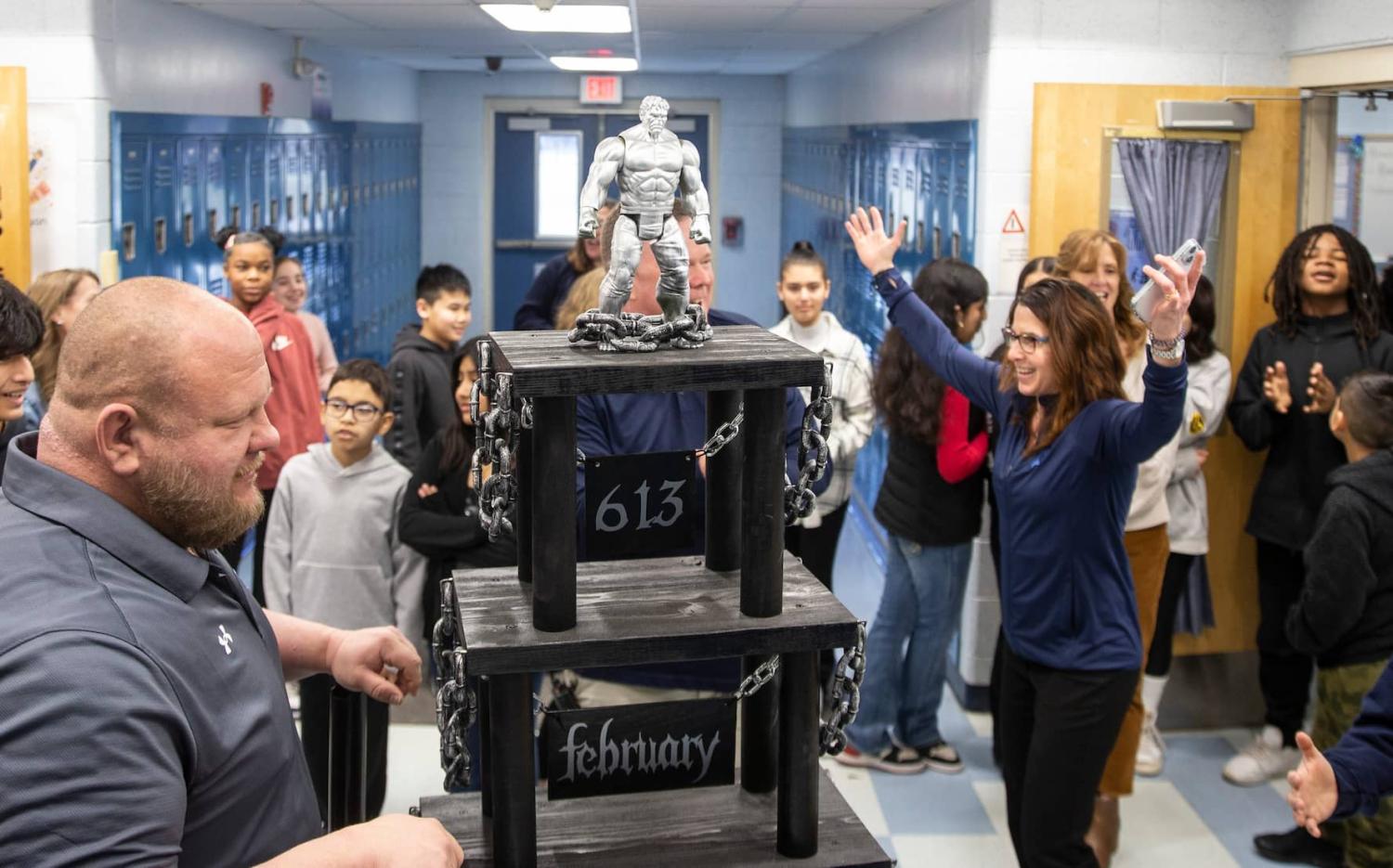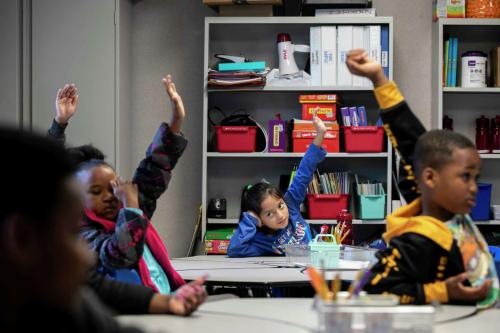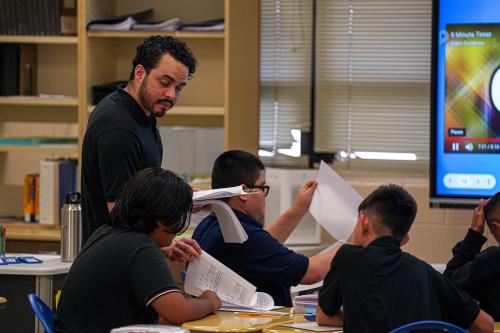Post-COVID-19, chronic student absenteeism has arguably become the number one challenge for public K-12 education. If children are not in school, they are not building the skills and knowledge necessary to keep up with their learning standards. And 30% of students nationwide were chronically absent in 2021-22—double the pre-COVID-19 average—with only minor improvements in 2022-23.
Seemingly contradicting the gravity of the chronic absenteeism crisis, a recent U.S. Department of Education survey shows just 15% of school leaders overall are “extremely worried” about this challenge. While the percentage is greater among school leaders of high-poverty schools (25%), it is still just a quarter of this group.
Regardless of how worried school leaders are, absenteeism is not a challenge school leaders can solve on their own. Parents can play a critical role in substantially reducing absenteeism. We wanted to understand the levels of concern, and reasons for those levels, among caretakers of K-12 children. Between December 6, 2023, and February 4, 2024, we used the Understanding America Study panel to ask a nationally representative sample of caretakers of K-12 children across 2,479 households questions about absenteeism from school. The results provide insight into the caretaker perspective and suggest concrete steps that caretakers and educators can pursue to address the challenge.
Caretakers underestimate (or underreport) their children’s absences
Missing 18 days (10% of 180 days) in a full school year typically defines chronic absenteeism. We surveyed caretakers approximately halfway through the school year, so we use missing more than 10 days in the first half of the year as a proxy for meeting the chronic absenteeism definition. Hence, we asked parents about the number of times their child has been absent, with six to 10 absences representing those nearing the threshold and 11+ absences representing those on track to be chronically absent through the full 180-day school year. Absenteeism is often higher the second half of the year, so even students with six to 10 absences in the first half could be chronically absent for the year if they adhere to typical attendance patterns.
As shown in Figure 1, approximately 15% of caretakers reported their child had been absent for six days or more in fall 2023. About a third of these caretakers reported absences of more than 10 days. These percentages are substantially lower than the rates found in hard data about chronic absenteeism (which in some states has been reported to be twice as high as what parents are reporting). While it is possible that parents underreport children’s absences—out of embarrassment, for example—research on data quality in probability-based online panels has shown substantially less error and bias than in non-probability based surveys. Furthermore, evidence on social desirability biases suggests that self-administered surveys that have no intended evaluative use are less likely to induce biases. So, while we cannot rule out the threat of social desirability bias explaining some of the difference between our reports and nationwide reports using hard data, we designed and implemented our survey to minimize such biases.
There was not much variation by race in caretakers’ responses. However, the lowest two household income categories report higher levels of absenteeism compared to the higher-income households. These income-related differences align with other evidence demonstrating low-income students tend to have higher absence rates, often due to challenges related to transportation, health care, housing, caregiver schedules, and other factors.
Less than half of caretakers with children at risk of being chronically absent report being concerned about it
Across the full sample, few caretakers report being concerned about the frequency of their child’s absences, echoing the low concern among school leaders reported elsewhere. Overall, eight percent of caretakers describe as true or very true that they are concerned about the frequency of their child’s absences, approximately the same regardless of student subgroup. Among caretakers whose children are old enough to have been in school before the pandemic, just nine percent report that their child misses more school now than they did pre-pandemic, and 82% do not think their child is missing too much school.
The more days a child has missed, the more concerned their caretakers are. For example, less than five percent of caregivers whose children were absent zero to five times say it’s mostly or very true that they’re concerned about absences, compared to 29% of those whose child was absent six to 10 times and 47% of those whose child was absent 10+ times. Even so, less than half of caretakers whose child clearly meets “chronically absent” criteria report being concerned about it.
Thus, even among caregivers who report their child was chronically absent, the majority do not see the absenteeism as a major problem. There is more to the story than simply parents’ lack of awareness of their children’s absenteeism.
Potential reasons for low caretaker concern about child absences include availability of online coursework
We explored caretakers’ attitudes toward several other attendance-related issues. Aligning with low parent concern, less than a quarter (22%) of caretakers of children who had missed six or more days of school through the first half of the year said it was mostly or very true that their child struggled to catch up after an absence (five percent of caretakers whose children had missed zero to five days reported the same).
We also hypothesized that the availability of online coursework options could relate to adults’ perspectives about absenteeism. We found a third (32%) of caretakers aren’t worried about their child missing school because everything the child needs to know is available online. Relatedly, a third of parents whose children missed six or more days of school (33%) believe it is okay for students to work from home if they want.
When we probed caretakers’ valuation of attending class in person versus working from home, 91% agreed or strongly agreed that in-person attendance is important even if materials are online, with minimal variation by child’s reported attendance, race, or income group.
So, while some parents feel that having online materials available mitigates some of the anxiety around absences, caretakers do still report strongly valuing in-person attendance.
No clear reasons why children are now missing more school
We didn’t find any clear insight into why children are now missing considerably more school than they were pre-pandemic. Over half (52%) of caretakers whose children had missed six or more days of school so far did not think any of the potential reasons we provided were true of their child. For all individual items, less than a quarter of respondents with children at risk of being chronically absent indicated they were mostly or very true (Table 1).
Individually, the reason with the strongest relationship with actual reported absences was a child’s anxiety about peers, tests, or in general (Pearson’s r=0.32, p<0.001). In other words, a parent reporting more absences for their child is most strongly related to also reporting anxiety as a reason for missing school compared to the other five options we provided.
Where to go from here
A lot has been written, including by members of our team, about the disconnect between parents and experts when it comes to COVID-19 learning loss and recovery. Our most recent results suggest this same disconnect also seems to hold when it comes to attendance. Our results point to low overall levels of concern, which seemingly flies in the face of the evidence about how much school U.S. children are actually missing. Results suggest potential factors driving this disconnect: Caretakers report lower levels of absence than state- and national-level data show (i.e., they are unaware how much school their kids are actually missing), most don’t seem to think that children are missing any more school than they were pre-COVID-19, and sizable proportions of them think that what children need to know is available online and that it is OK to work from home.
If we are going to get children back in school, these results call out for intervention. Parents need very clear, direct reporting about how much school their children are missing, especially if their children’s absenteeism creeps up into chronic territory. Longitudinal comparisons (e.g., your child is missing XX more days than they used to) or other normative comparisons (e.g., your child’s attendance is lower than XX percent of their peers) might be one effective strategy. These kinds of comparisons have been shown to drive attendance behavior in a Philadelphia experiment, for example.
But we also need deeper understanding of what is driving ongoing absence so we can work to reduce it. One factor may be the ready availability of online learning options for when children are absent. These resources are useful for expanding learning opportunities, but schools must impress upon parents that they are a supplement to, not a substitute for, in-person attendance.
Overall, these results are yet another troubling datapoint about the slow COVID-19 recovery. Given the importance of attendance for student learning, we hope these findings can offer paths forward to get children back in classrooms as much as possible.
The Brookings Institution is committed to quality, independence, and impact.
We are supported by a diverse array of funders. In line with our values and policies, each Brookings publication represents the sole views of its author(s).










